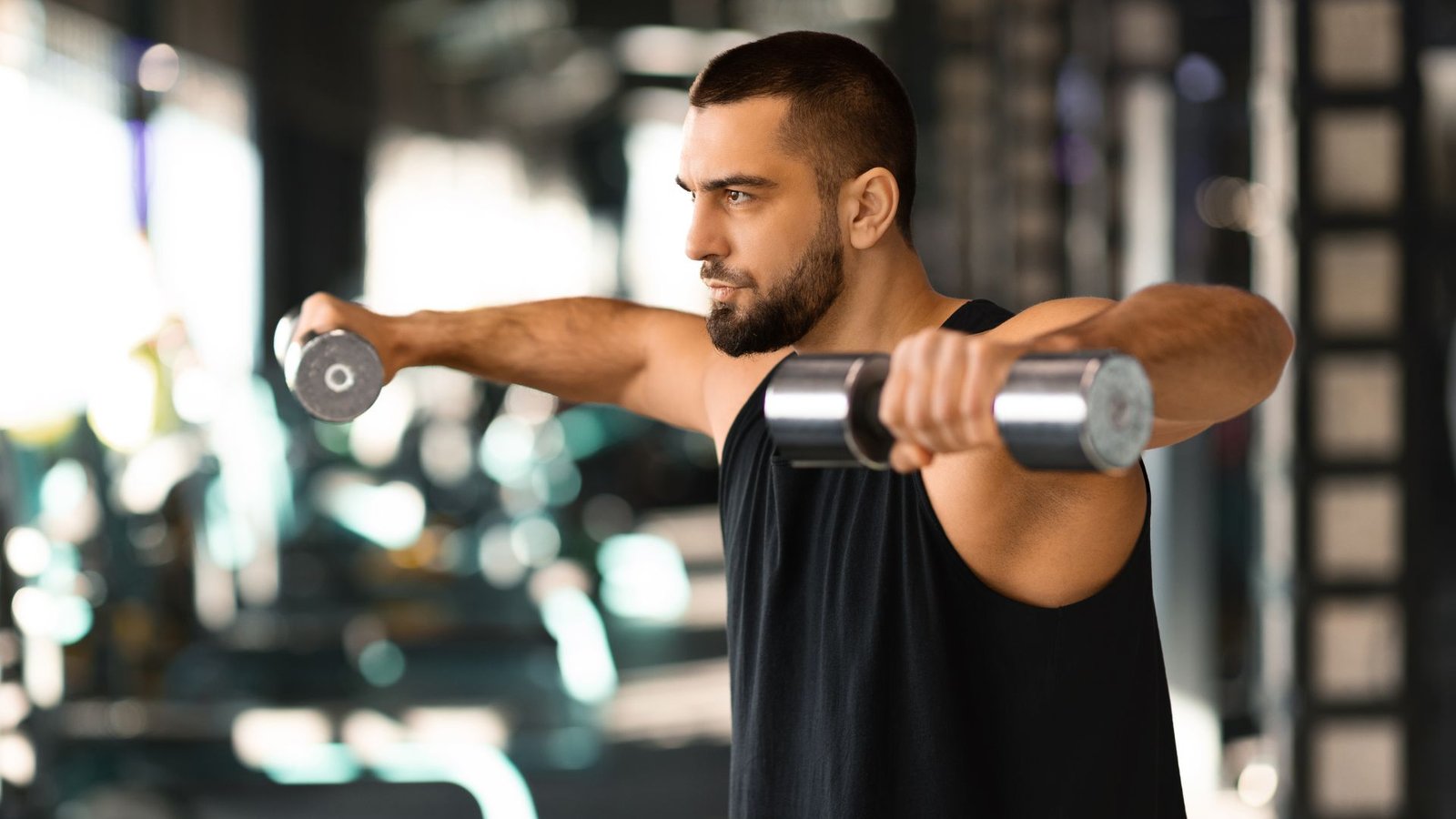
When it comes to sculpting strong and defined shoulders, few exercises are as effective and widely praised as the lateral raise. This seemingly simple movement is a staple in many workout routines, and for good reason: it targets the deltoid muscles, specifically the medial head, which gives your shoulders that broad, rounded look.
In this blog, we’ll dive deep into the benefits of lateral raises, how to perform them correctly, common mistakes to avoid, and how to incorporate them into your workout routine. Let’s raise the bar—literally!
What Are Lateral Raises?
The lateral raise is an isolation exercise that primarily targets the middle deltoid, the muscle responsible for shoulder abduction (lifting your arm out to the side). By focusing on this muscle, lateral raises help create width in your upper body, enhancing the coveted V-taper physique.
Whether you’re a beginner or a seasoned gym-goer, incorporating lateral raises into your routine can help you build stronger, more defined shoulders while improving posture and shoulder stability.
How to Perform the Lateral Raise Correctly
To get the most out of this exercise, proper form is key. Follow these step-by-step instructions for flawless lateral raises:
1. Start Position:
- Stand tall with your feet shoulder-width apart.
- Hold a pair of dumbbells at your sides with your palms facing inward.
- Keep your back straight, chest lifted, and core engaged.
2. The Movement:
- Slowly raise your arms out to the sides until they’re at shoulder height.
- Your elbows should have a slight bend, and your palms should be slightly angled downward, as if pouring water from a pitcher.
- Pause briefly at the top.
3. Lowering the Weight:
- Slowly bring your arms back down to the starting position.
- Avoid letting the weights drop too quickly to maintain tension in the muscles.
4. Breathing:
- Exhale as you lift the weights and inhale as you lower them.
Benefits of the Lateral Raise
Shoulder Isolation:
Lateral raises specifically target the medial deltoid, allowing for focused muscle activation.Improved Posture:
Strengthening the shoulders helps counteract the effects of slouching and can improve overall posture.Enhanced Aesthetics:
Well-developed shoulders create the illusion of a smaller waist and a more balanced physique.Joint Stability:
Strong shoulders contribute to better stability in pressing and overhead movements, reducing the risk of injury.
Common Mistakes to Avoid
While the lateral raise is a simple movement, it’s easy to make mistakes that hinder your progress or increase the risk of injury. Here are the top errors to watch out for:
Using Too Much Weight:
Heavy weights can lead to poor form and unnecessary strain. Stick to a weight that allows you to perform the exercise with control.Shrugging Your Shoulders:
Keep your shoulders down and relaxed to avoid engaging the traps excessively.Swinging the Dumbbells:
Momentum reduces muscle activation. Focus on slow, controlled movements.Raising Arms Too High:
Lifting beyond shoulder height can place undue stress on the shoulder joint.
Variations of the Lateral Raise
Seated Lateral Raise:
Eliminates the potential for momentum, making the movement more challenging.Cable Lateral Raise:
Provides constant tension throughout the movement for a more intense burn.Single-Arm Lateral Raise:
Allows you to focus on one side at a time, correcting muscle imbalances.Incline Lateral Raise:
Performed on an incline bench, this variation emphasizes the rear deltoids as well.
How to Incorporate Lateral Raises into Your Workout
For best results, perform lateral raises 2–3 times per week, ensuring proper recovery. Aim for 3–4 sets of 10–15 reps using moderate weight. They pair well with other shoulder exercises like overhead presses or can be added as a finisher in an upper-body workout.
FAQs About Lateral Raises
1. Can beginners do lateral raises?
Absolutely! Start with light weights to perfect your form before gradually increasing resistance.
2. Are lateral raises safe for shoulder pain?
If you experience pain, consult a professional before performing lateral raises. Modify the range of motion or use resistance bands as needed.
3. How can I make lateral raises more challenging?
Increase the weight, slow down the tempo, or try a variation like cable or incline lateral raises.
Conclusion
The lateral raise is a must-have in your arsenal for building stronger, more defined shoulders. By mastering the proper form and avoiding common mistakes, you’ll reap the full benefits of this classic exercise. Remember, consistency and attention to detail are key to achieving your fitness goals.
Ready to transform your shoulders? Incorporate lateral raises into your workout routine today, and watch your strength and aesthetics soar!